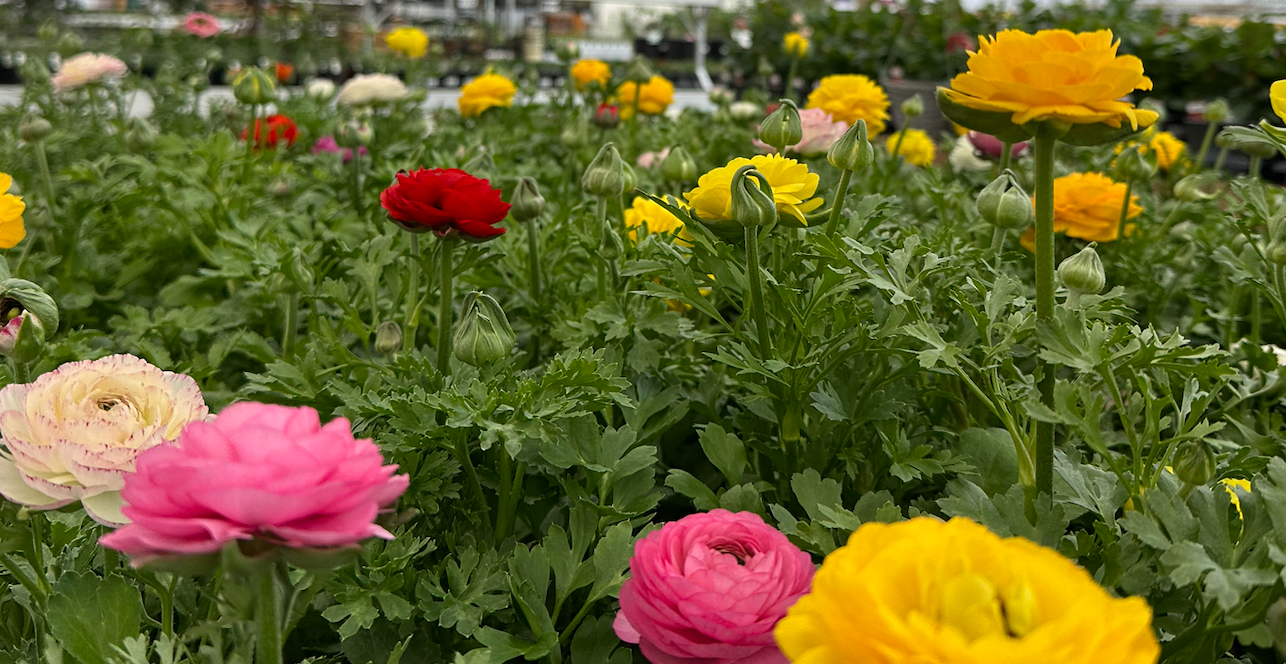
Ranunculus'
Ranunculus' are beautiful and amazing… corms? No, not corn but CORMS.
Now what are corms? Corms are simply energy storage systems: just like bulbs. They simply vary slightly in structure. While bulbs are layered with leaves somewhat like an onion, corms are a very thick root like a beet with all the energy stored inside. Both spend winter dormant and bloom in early spring.
Unfortunately in our zone (3a) ranunculus’ are not a perennial. Most are perennial only in zone 6 and above which means you can’t even get away with trying to find a cozy microclimate around your house. However because of their corms they can be dug up just like a bulb and replanted year after year.
You can easily buy ranunculus grown from seeds which will need all summer to develop a tiny little corm or you can buy the corms themselves. The seed-grown plants can be planted in the garden once the frost date is passed, make sure to plant them in full sun and be very careful about the temperature in early spring as they are not at all frost-tolerant.
The corms need a little bit more love.
When you get your corms they will look like odd little brown splat shapes. This is completely normal. Look them over for signs of mold or rot - the corm overall should be firm and dry. Before planting they need to sit in room-temperature water for 3-4 hours; any more and they will rot. After they soak they can be planted directly into the ground, splat arms down, or pre-sprouted which will trick them into sending out blooms earlier.
To pre-sprout, fill a flat-bottom seed tray half full of damp potting soil. Place and cover the corms in more damp soil. Leave the tray in a cool place (4-10 ℃) for about 2 weeks checking every day and making sure the soil is damp but never soggy. Keep a watchful eye out for mold or rot and remove any corms showing signs of either. During this time the corms can swell to twice their original size and sprout white hair-like roots all over once these rootlets appear they are ready for planting.
You need to be careful about when you plant them however because if they are exposed to temperatures below -4℃ they will die away, you can avoid this by planting them in pots and bringing them in should the temperature become frosty. Since ranunculus’ need on average 90 days to bloom this also ensures you will have beautiful blooms before september.
Once the summer hits however, ranunculus thrive in the heat. Most species need loamy aerated soil that is easy to grow in so if you have clay make sure you prepare the soil well by thoroughly mixing in a compost or peat to loosen the soil However certain varieties prefer their feet a bit wet for example Ranunculus repens varieties can even be grown next to ponds or in low lying areas and don’t care at all about being in clay.
Ranunculus have an outstanding vase life, often exceeding 10 days. Cut when buds are coloured and squishy like a marshmallow, but not yet fully open, for a vase life of 10 to 12 days.
*Toxic to humans and cats and dogs if ingested in large quantities - know your pets, partners, and childrens garden grazing habits before deciding to plant in your garden.
